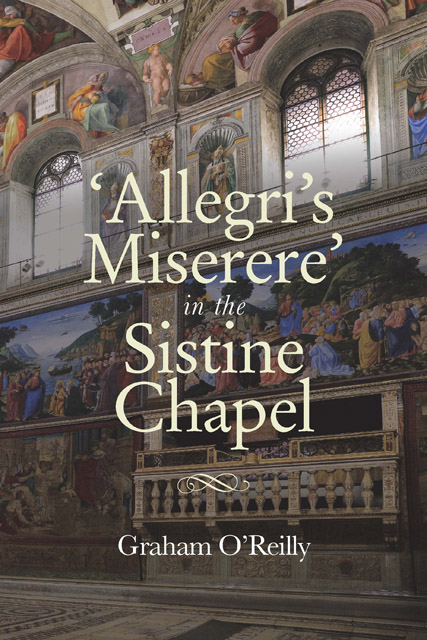Book contents
- Frontmatter
- Contents
- List of illustrations
- List of tables
- List of music examples
- Acknowledgments
- Note on the text
- Introduction: myth and reality
- Part One The Sixteenth and Seventeenth Centuries
- Part Two The Eighteenth Century
- Part Three The Nineteenth Century
- Part Four Performing the Miserere in the Twentieth Century
- Part Five Appendices, Editions and Notes
- List of appendices
- Bibliography
- Index
- Frontmatter
- Contents
- List of illustrations
- List of tables
- List of music examples
- Acknowledgments
- Note on the text
- Introduction: myth and reality
- Part One The Sixteenth and Seventeenth Centuries
- Part Two The Eighteenth Century
- Part Three The Nineteenth Century
- Part Four Performing the Miserere in the Twentieth Century
- Part Five Appendices, Editions and Notes
- List of appendices
- Bibliography
- Index
Summary
The year 1513 saw the election of a new pope, Leo X. He was well known for his love of music and the arts, a quality not always looked upon with approval by his contemporaries. In the words of one of the less sympathetic of them, the Sienese canon and diarist Sigismondo Tizio:
Many were of the opinion that it was bad for the Church that her Head should be absorbed in amusements, music, the chase and buffoonery, instead of being occupied by the thought of the needs of his flock and bewailing its misfortunes.
After the inauguration of the Sistine Chapel in 1483, decoration of it had proceeded at pace, and Michelangelo’s vault frescoes were completed in 1512. Leo was thus able to make it the centre of his personal ceremonial in the Vatican, and one of his first decisions was to increase the role of the choir. He decreed that in Holy Week 1514 the Miserere at the end of the offices of Tenebræ should be sung in a special way, perhaps as an aid to meditation and reflection. Tenebræ was already one of the most important religious ceremonies of the church year which took place there; from now on it would be an increasingly important artistic one as well.
Tenebræ
Tenebræ was a very ancient office celebrated three times in Holy Week. It was in fact two offices in one, combining Matins and Lauds for the three days known as the Triduum sacrum: Maundy Thursday, Good Friday and Easter Saturday. From about the thirteenth century, it was celebrated not in the mornings of those days but the preceding evenings: that of Maundy Thursday on Wednesday evening, that of Good Friday on Thursday evening, and that of Easter Saturday on Friday evening. Starting therefore in the late afternoon and finishing after nightfall, it quickly acquired the name Tenebræ: shadows, or darkness. The name doubtless also refers to the fifth of the nine Responsories at Matins on Good Friday – ‘Tenebræ factæ sunt, dum crucifixissent Jesum Judaei’ (‘There was darkness when the Jews crucified Jesus’). Matins on these days consists of nine psalms, each with its own lesson (the first three are taken from the Lamentations of Jeremiah), responsory and antiphon. Lauds has four psalms and two canticles.
- Type
- Chapter
- Information
- Allegri's Miserere in the Sistine Chapel , pp. 19 - 36Publisher: Boydell & BrewerPrint publication year: 2020



